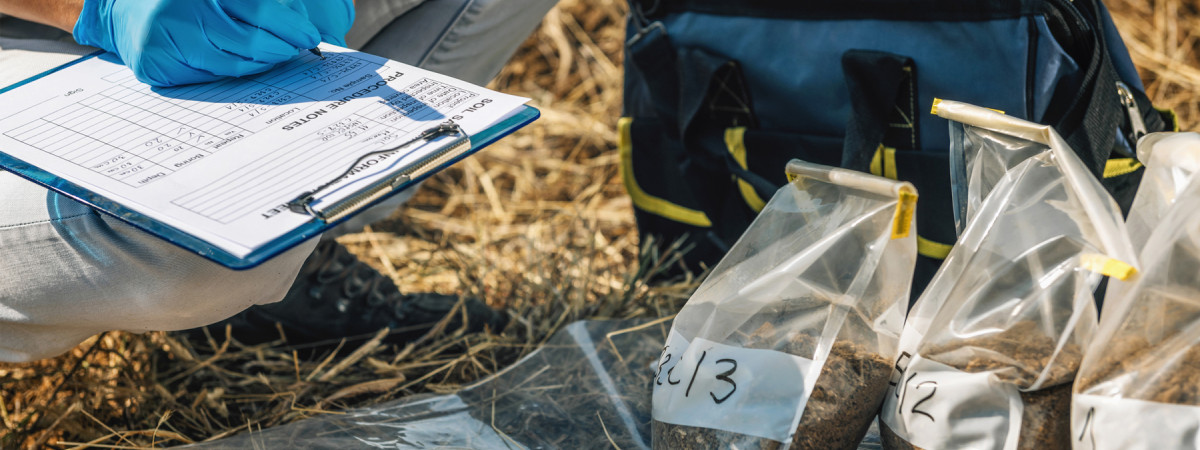
Photo by microgen on iStock
Authors
-

Manager, Climate and Nature, BSR
-

Associate Director, Transformation, BSR
-

Director, Consumer Sectors, BSR
Key Points
- As regulation and the movement toward nature positive gain speed, companies must understand their nature impacts, manage biodiversity metrics, and report progress.
- e-DNA is one of a suite of emerging technologies that complement and advance traditional biodiversity metrics.
- BSR provides an overview of e-DNA’s promise, limitations, and key considerations to inform company decision-making to reduce or avoid biodiversity loss and restore ecosystems.
Pressure for companies to understand, measure, reduce, and ultimately reverse their biodiversity impacts is mounting. Global agreements (Global Biodiversity Framework), voluntary frameworks (Taskforce on Nature-related Disclosures and the Science Based Targets for Nature) and regulations (Corporate Sustainably Reporting Directive) all point toward rising expectations and underscore the need for increased business attention.
However, biodiversity is multifaceted, and natural systems are interconnected—there is no single metric like a GHG equivalent to encompass all aspects of biodiversity. BSR recommends measuring data related to five different impacts which include land use change, climate change, overexploitation of resources, pollution, and invasive species, and considering the state of biodiversity to prioritize action. Given the complexity of measuring business impacts on nature and the growing impetus to do so, it's no surprise that several new approaches are emerging that enable better data collection for biodiversity state metrics. One such approach is bioacoustics (covered in a previous blog on decoding nature’s soundscapes), another is environmental DNA (e-DNA).
What is e-DNA?
All species leave traces of their presence in an environment. These traces are known as e-DNA, and can tell us which species—plants, fungi, or animals—were in an environment. e-DNA can be collected in water, soil, air, and even the seabed. e-DNA Technology is used to analyze e-DNA and identify the species present within a sample. After sample collection, DNA sequences are extracted and analyzed against large meta-databases of genetic information previously collected from hundreds of species to identify each trace in the sample.
Advances in biological sequencing technology have reduced both the cost and the time needed to process data, enabling venture-backed start-ups like DNAir—which pulls air samples for e-DNA analysis—to attract funding and refine solutions. DNAir’s CEO & Founder, Fabian Roger, notes, “While e-DNA is complementary with traditional ecological survey methods, it can uncover hidden diversity by detecting more species than through conventional methods- including often undetected species such as invertebrates or micro-organisms such as bacteria.”
How can e-DNA meet business needs?
e-DNA offers a non-invasive, rapid, and relatively low-cost method for safely identifying the presence of species—including rare, threatened, and invasive ones. It can be useful across multiple project applications and phases, including:
Before and during facility construction: e-DNA technology can help identify biodiversity presence and absence, providing a better understanding of the spatial distribution of species and species groups, including high-risk threatened species that should be assessed in further detail. e-DNA can also detect invasive or pest species at an early stage, potentially preventing or limiting costs associated with managing invasions.
Evaluating Project Impacts: e-DNA can help track the effectiveness of mitigation and restoration actions by providing a more accurate measure of priority species loss or gain: “Kering is piloting e-DNA as part of its Regenerative Fund for Nature, to explore a more systematic and harmonized way to measure the biodiversity impact of its projects – and particularly species richness. It is an innovative way to increase transparency on a project's impact on biodiversity in a user-friendly yet scientific approach We hope to contribute to increasing local data on biodiversity and we believe EDNA shows great potential for becoming a standard tool for biodiversity monitoring in regenerative agriculture, conservation and restoration projects globally.”
Limitations and risks of e-DNA
Like all emerging solutions, e-DNA has limitations that must be managed:
- Availability of Comparison Data: One of the main challenges with e-DNA today is the robustness and completeness of available datasets for species comparison. Simply put, if DNA sequences for a species are not available in the database used to cross-check samples, those species cannot be identified. The size and quality of databases are improving every day as more and more cooperative genetic databanks, such as Genbank, come online.
- Sequence Interpretation: Accurate sample analysis requires interpretation in context of the nuances of the environment in which the sample was collected. e-DNA degrades rapidly in freshwater and ocean samples, but can persist for decades in soil—and both scenarios pose challenges for pinpointing when a species was present. Identifying a fish species from a freshwater sample could mean that a fish was present at the sample location OR upstream. e-DNA also doesn’t tell us how big the species was, their developmental stage (e.g., larva, adult), or health—e-DNA detects both living and dead organisms.
- Data Privacy & Responsibility: While we’ve focused on the environmental benefits of e-DNA, there are also human impacts to consider. The first is who owns e-DNA and genetic data - an issue made more concerning when we consider that human DNA is also present in many of these environments. Human traces of e-DNA can reveal genetic and ethnic makeup of populations as well as medical conditions in nearby populations raising issues of privacy, consent, and potentially discrimination. While e-DNA can be used to support Indigenous rights and protect culturally significant sites by providing scientific support, the collection of e-DNA must consider indigenous rights, consent, and data sovereignty.
The Future of e-DNA
Uncertainty remains, but e-DNA clearly has much to offer on the path to a nature-positive economy. Companies can already consider it as part of their data collection toolkit while also exploring opportunities to support continued improvements in e-DNA and other emerging solutions to biodiversity challenges. As solutions “buyers,” companies play a critical role in ensuring emerging technologies are developed and deployed in ways that prevent harm, protect vulnerable populations, and scale and disseminate best practices—for people and ecosystems alike.
If your team is interested in better understanding the regulatory landscape, exploring peer positioning, or defining nature goals and strategy, please reach out to BSR’s Nature team.
BSR’s latest sustainability insights and events straight to your inbox.
Topics
Let’s talk about how BSR can help you to transform your business and achieve your sustainability goals.







